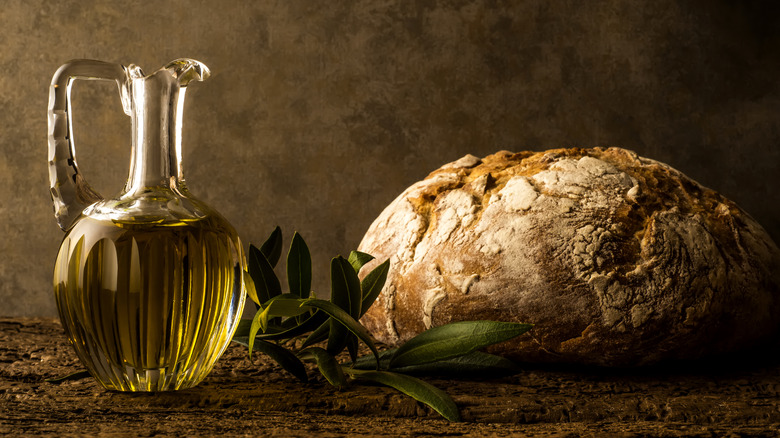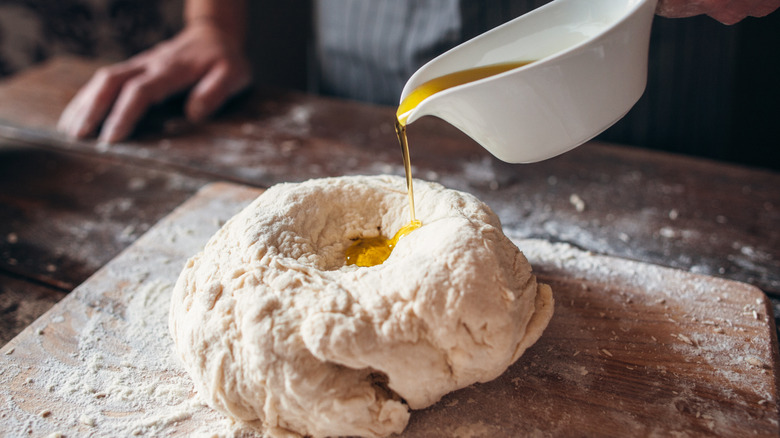Add Oil To Homemade Bread For An Upgraded Texture
Aside from the advantage of saving some metaphorical dough in the long term, making bread at home is a rewarding experience. Your home fills with the smells of a savory bakery, while the soft, chewy texture of the bread you've just made rivals that of any store-bought loaf you can purchase in the grocery store. But getting it just the way you want it sometimes requires experimentation. Even if you consider yourself a seasoned baker, there are always new tricks you can learn to elevate your end product.
It's important not to get too creative when substituting ingredients in a baked dish, but that's not to say it should never be done. Nicole Bean, a pizza and bread making expert who co-owns and operates two Houston pizzeria locations, Pizaro's Pizza Napoletana, says that improving the texture of your homemade bread comes down to a simple addition. "Oils usually tenderize the dough, creating a soft dough," she says. However, it's worth noting that this step may sacrifice a thicker crust, due to the increased moisture of the dough.
A pillowy loaf of fresh bread is delightful in itself, but introducing a little textural contrast can take it to the next level. On top of adding oil, Bean says, "Baking soda will create more activation and can lead to more or larger crumb structure." Using oil and baking soda together when baking bread can be a match made in heaven, but which kind you use — along with other elements — can affect the flavor and texture in a big way.
Oils affect the texture and flavor of bread
The type of bread you have your heart set on will determine the optimum amount and type of oil to throw into the mix. Sourdough can call for canola or vegetable oil, while Irish soda bread might call for some butter instead. Many varieties call for neutral-tasting fats so they won't overwhelm your palate — another reason you shouldn't always use extra-virgin olive oil in every recipe. The rich taste might be a welcome addition to some breads, but others will be overpowered by the distinct, sometimes intense flavor of a less-refined olive oil.
As far as further improving the texture, thinking outside the box might be your best bet. Bean said, "I have seen many people use things like yogurt, baking soda, nutritional yeast, etc. These all affect the dough differently depending on what you are looking for from your bread." Using bread flour in baked goods is an example of utilizing something unique to achieve satisfying chewy bites and a crunchy crust.
Baking anything involves chemistry to bring the dish together, and it's worth remembering that some elements can alter those chemical reactions. When replacing ingredients, it's critical to think about how the substitutions will react with one another ahead of time. Trial and error is a great way to learn, but being mindful while getting creative is the surest way to avoid mistakes.

